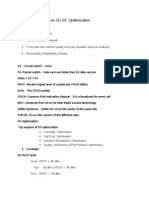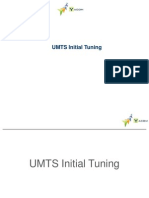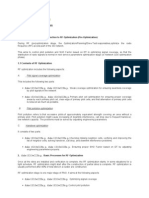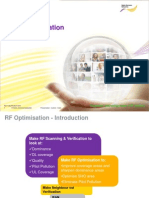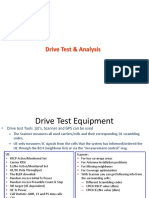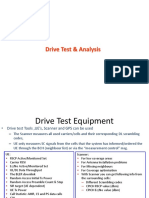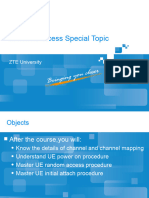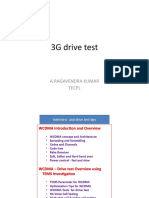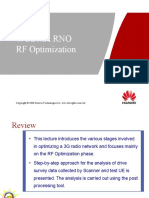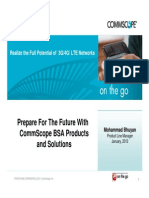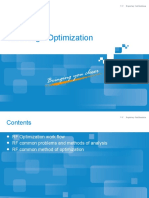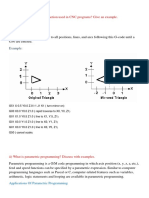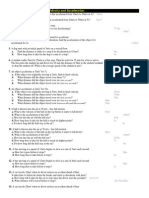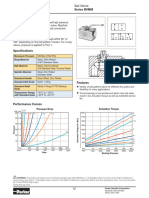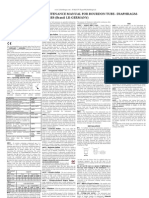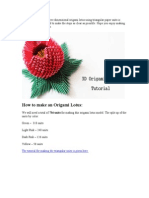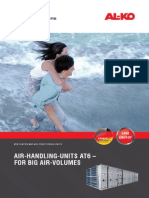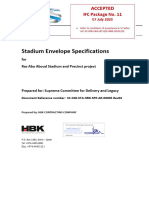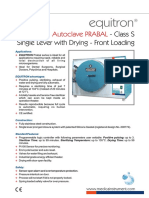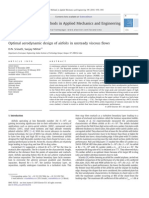RF OPTIMIZATION
Network Analysis and
Tuning
�RF Optimization
Objective
- Reach the optimal configuration of each cell site in the wireless
network (height, tilt,
orientation)
- Maximise RF QoS (coverage improvement, interference reduction)
and capacity of the
network
- Define neighbouring plan according to drive test
Method
- Use of drive tests
- Identify a list of optimization recommendations aiming to achieve the
optimization
targets in all the identified problematic areas
- Prioritise the optimisation recommendations according to the input
received from the
regions regarding the details of each area
- Highlight the expected improvements or degradations
�Data Analysis Flowchart
Scanner
and UE
drive logs
Compare scanner
measurements with planned
quality and coverage thresholds
Low
CPICH Ec/No
CPICH RSCP
=>
threshold
Yes
CPICH
Ec/No =>
threshold
Yes
Dominance
Area OK
Yes
No
Amount of
SC > X
Yes
Pilot
Pollution
No
Aggregated
to Peak > 3
dB
No
Bad Ec/Io
Yes
Multi-path
problem
�RF Performance Measurements
Ec/N
o
- Low RSCP
- High Ec/No
Bad Coverage
Signal can be
decoded
(e.g. while
Target Ec/No
leaving a
- Low
RSCP area 4
coverage
without
- Low Ec/No
interferer)
Bad Coverage
Bad Signal
(e.g. unclear
server
situation,
interference)
- High RSCP
- High Ec/No
Targe
t
Good Coverage,
Good Signal
Quality
(e.g. mid of cell)
- High RSCP
- Low Ec/No
Good Coverage
High Interference
(many interferer,
Pilot Pollution)
Target RSCP
RSCP
�What To Do If
1. High Interference Area (High RSCP and low Ec/No e.g. Pilot
Pollution):
Reduce interference by reducing too high number of strong pilots
Ec/No
Solution: adjust antenna down tilts of involved
Scrambling Codes
- Low RSCP
3
- High Ec/No
- High RSCP
- High Ec/No
2. Excellent Area (High RSCP and high Ec/No):
Target Ec/N0
Good RSCP and good Ec/No
- Low RSCP
- High RSCP
4
- Low Ec/No
- Low Ec/No
Good quality
Target RSCP
3. Poor Coverage Area (Low RSCP and high Ec/No):
Improve coverage by adjusting antenna azimuths towards coverage
gap
Check calculated site-to-site distance from link budget: if not sufficient
in network,
additional Sites are needed
4. Non-dominant Server Area (Low RSCP and low Ec/No):
Increase the signal strength of the most probably serving sector that
can provide
sufficient RSCP coverage quality
�RF Tuning
High Priority
Tuning Methods for Coverage
Problem Area
Up tilt of serving cells antenna to
extend coverage radius and to
improve unsatisfied coverage area
Increase CPICH Tx Power of serving
cell
Change antenna bearing angle:
Focus the main beam of antenna to
coverage holes and low RSCP area
Change antenna pattern: Displace
with higher antenna gain antenna
with adequate antenna tilting
Increase serving cells antenna
height to get higher effective antenna
gain but there is risk to make
undesirable inter-cell interference to
adjacent cells
Tuning Methods for Dominance
Problem Area
Down tilt of serving cells antenna
which generate pilot pollution
Change CPICH Tx Power: Increase
serving cells Tx power but decrease
interfering cells Tx power
Change antenna bearing angles of
cells involved in pilot pollution
Change antenna patterns of cells
involved in pilot pollution. Smaller
gains for interfering cells and higher
gain for victim cell
Decrease antenna height of
interfering cells and increase antenna
height of victim cell with adequate
tilting angle
�Pilot Pollution
Basic Definition
- Any cell that provides an Ec/No level higher than the Pilot Pollution
Threshold, but is not in the UEs active set, is a pilot polluter for the UE
Indication for Pilot Pollution
- More than 3 CPICHs (Ec/No or RSCP) are decoded within a sliding
window of 6...8dB
size, but not all can be used in the active set
- Window should be above Reporting Range and above minimum
design criterion
- CPICH Ec/No very low (High interference)
Effects
- Decreased connection quality (low throughput / bad speech quality)
- Rise of UE Tx power due to high interference
- increase of SHO
- increase of signaling traffic
�No Dominant Server
No Dominant Server Area:
- All detected CPICH are below minimum design criteria (targets)
- All detected CPICHs are within same level, interfering each other
- Low RSCP, low Ec/No
Effects
- Low RSCP, low Ec/No poor signal
- Rise of UE Tx power due to high interference
- Decreased connection quality (low throughput / poor speech quality)
- Increase of call drop rate
- Increase of signaling traffic capacity loss
�Electrical vs Mechanical Tilt
Mechanical
- The down tilt angle varies over the horizontal beamwidth. Patterns
measure +-90 from
the center of the beam have decreasing tilt angle until there is no
tilt 90 from the main
beam
- The horizontal half-power beam width increases with greater down
tilt
- The resulting gain reduction depends on azimuth direction
Electrical
- There is uniform down tilt over the whole azimuth range
- The horizontal half-power beamwidth is independent of the down tilt
angle
- There is identical gain reduction in all azimuth directions
Mechanical vs Electrical
- The largest advantage of electrical antenna down tilt is that the
horizontal beam width
is not affected.
- High mechanical tilt, the cells become shorter and wider
�Calculation of Pre-optimized down tilt
Site-to-Site Distance D
Antenna Height H
Distance to Point of Interest D
P O
Main Lobe
Ground
Ground Height H
G _ P O I
at Point of Interest
Ground Height H
G A
at Antenna Location
Antenna Vertical Beam








